Israel-Hamas War: What happened on day 48?
Some 13 hostages set to be freed from Gaza at 4 p.m. on Friday • Israel received list of released hostages, Netanyahu confirms
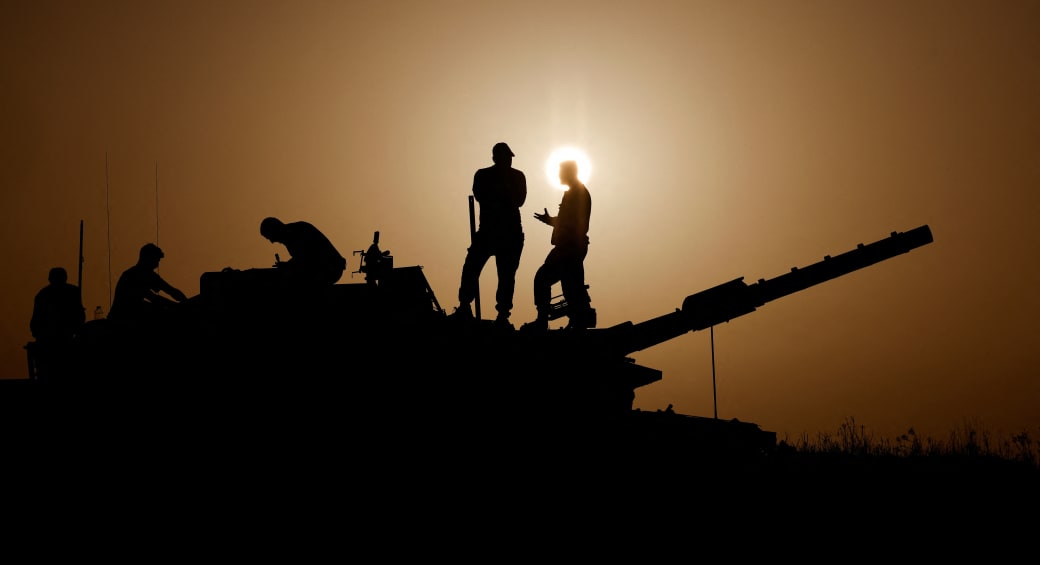
Qatari FM: Ceasefire, hostage release deal to be finalized in coming hours

The Qatari Foreign Ministry stated that talks concerning a ceasefire and hostage release deal between Israel and Hamas were "progressing positively," with the date of entry into force of the agreement to be announced in the "coming hours," a spokesman for the ministry told the Qatar News Agency.
The spokesman added that "work is continuing with the two parties and our partners in the sisterly Arab Republic of Egypt and the United States of America, to ensure the rapid start of the truce and to provide what is necessary to ensure the parties’ commitment to the agreement."
Go to the full article >>Gaza war pause, hostage deal delayed until Friday
Hezbollah is not included in the deal and cross-border violence on Israel’s North does not impact it.
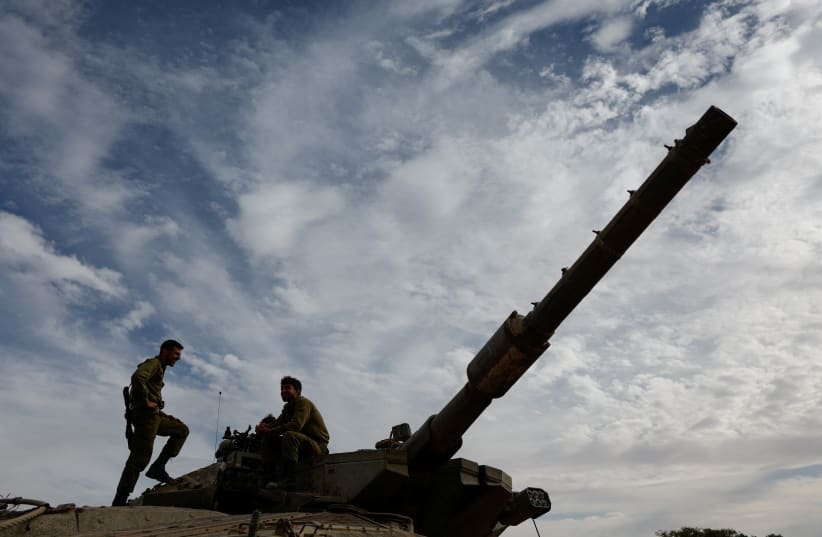
The deal to exchange a pause in the Gaza war for the release of some 98 women and children was delayed by a day and is now expected to go into effect on Friday due to a last-minute complication.
Hezbollah is not included in the deal and cross-border violence on Israel’s North does not impact it.
The contentious deal that the government approved at 2:30 a.m. on Wednesday, the 47th day of the war, could allow for all 40 of the children and 58 of the women that Hamas has held since it seized over 239 captives during its infiltration of southern Israel on October 7.
Only once the hostages are in Israel will the families be notified, to avoid raising false hopes among the relatives of the captives to be freed.
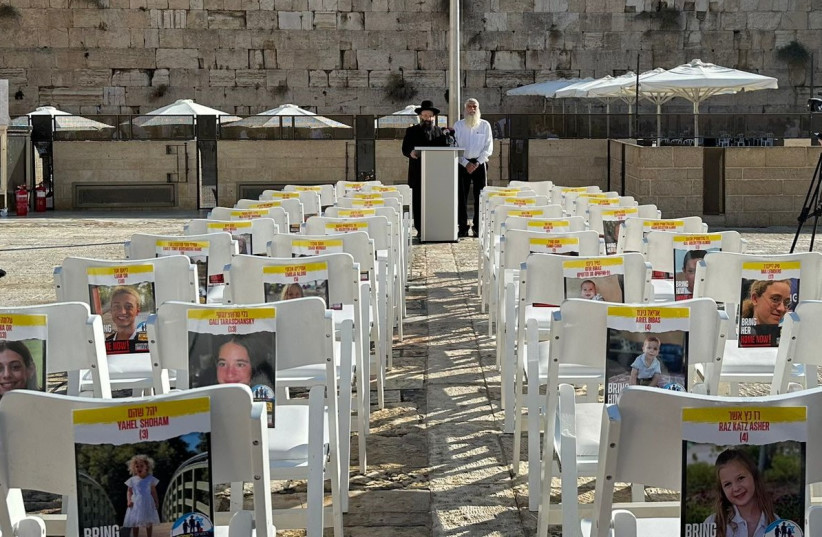
Prime Minister Benjamin Netanyahu pledged that the war to eliminate Hamas would continue once the hostage deal was completed.
“The war continues, we will continue it until we achieve all our objectives,” he said. This includes freeing all the captives, eliminating Hamas and to ensure that the day after Hamas there won’t be an entity that supports or educate for terror.
“Gaza won’t pose a threat to Israel,” he said, adding that,“We will continue to fight until there is complete victory.”
Netanyahu also pledged that all the hostages would be released, including the two Israeli captives Hamas has held since 2014 and 2015 — Avera Mengistu and Hisham al-Sayed. He also referenced the two soldiers believed killed in the 2014 Gaza war Hadar Goldin and Oron Shaul.
“We will return everyone home. And when I say everyone I mean everyone,” he said.
Netanyahu thanks Biden for help, says he pushed Biden to expand it
Netanyahu thanked US President Joe Biden for his efforts and took credit for pushing Biden to expand the counters of the deal.
Biden, who along with top officials in his administration, was heavily involved in arranging the deal, posted a note of gratitude on X for the conclusion of the deal.
“I’m gratified that these brave souls, who have endured an unspeakable ordeal, will be reunited with their families once this deal is fully implemented,” Biden wrote.
Some of those held hostage have dual Israeli-American citizenship.
“As president, I have no higher priority than ensuring the safety of Americans held hostage around the world,” Biden stated. “And I will not stop until they are all released.”
An Israeli official told reporters on Wednesday that Biden played a significant role in expanding the scope of the deal by opening up the possibility of freeing all the children and women, save for five female soldiers.
Uncharted territory for Israel
The deal’s execution sends Israel into unchartered territory as it seeks to implement a mechanism that at its core is designed to ensure the release of 50 Israeli women and children in stages over four days, during which the Gaza war will be paused. This includes a halt to all Hamas rocket fire into Israel.
“The first day will provide a model for how to operate this,” an Israeli official explained.
At a bare minimum, it must be 10 hostages a day, but the group would have to be larger than that to hit the 50 mark within four days.
Israel will, in exchange, release 150 Palestinian women and minors under 18 jailed for involvement or suspected involvement in security-related offenses.
The mechanism dictates that three Palestinian prisoners will be freed for every one Israeli captive. With the hope that this deal would allow the release of all Israeli children and civilian women captives in Gaza, Israel’s prison services have posted a list of 300 jailed Palestinian women and minors who could be freed.
Once the first 50 hostages are freed, the two sides can agree that an additional 10 Israeli hostages can be freed in exchange for an additional 24-hour pause and the release of 30 Palestinian prisoners.
“There is a good chance that more than 50 captives will be freed,” an Israeli officer told reporters on Wednesday, adding that the deal is unlikely to exceed 98 and will probably not include more than 80.
The deal is limited to women and children and does not include male hostages, he said. Of the first 50 captives, only 30 will be children, the official said, explaining that Hamas would need more than the initial four days to produce the remaining 10 children.
“Hamas doesn’t know where all the children and their mothers are,” the official stated.
This is one of the reasons, he explained, that a mechanism was created to extend the deal. It’s presumed that Hamas is holding most of the hostages, he said.
Children will be released with mothers, but likely not with fathers
All the children who are being held with their mothers will be released together with that parent, the official said. But it is likely that a father would not be released with his child, even if he is the sole parent.
On Wednesday night Hamas is expected to provide Qatar, who mediated the deal, with a list of the hostages to be released. Qatar is expected to hand it to Mossad Chief David Barnea and IDF Maj.-Gen. (res.) Nitzan Alon, who are in Qatar to evaluate the list, according to media reports.
According to an Israeli official, the list of hostages and jailed Palestinians to be released will be handed on a daily basis to the International Committee of the Red Cross, which will then transfer it to the other sides.
Hamas will hand over the hostages to the International Committee of the Red Cross, which will then transfer them to Israel, likely through the Rafah Crossing. The hostages will then be taken to Israeli hospitals where they will be reunited with their families.
Netanyahu in his press conference stressed that the deal also allowed for the Red Cross to visit all the hostages not included in the deal and to provide them with needed medicines.
Israel’s military campaign to oust Hamas from Gaza was sparked by the October 7 attack in which the terror group killed over 1,200 people in southern Israel.
Hamas has asserted that over 14,000 Palestinians have been killed in Gaza, in war-related violence.
The high death count combined with vivid photographs and videos of the dead and wounded has prompted many in the international community to call on Israel to permanently halt its Gaza campaign.
Jordan’s King Abdullah headed on Wednesday to Cairo for talks with Egyptian President Abdel Fattah al Sisi on how to end “Israel’s aggression against the Palestinians,” a palace statement said.
The talks will focus on how to turn the four-day agreed-upon truce into a permanent ceasefire that brings an end to the Israeli bombardment of Gaza and averts a humanitarian catastrophe, an official told Reuters.
Reuters contributed to this report.
Go to the full article >>US warship shoots down Houthi drones over Red Sea
The incident came just hours after a cruise missile fired by the Houthis was intercepted by the Israeli Air Force near Eilat.
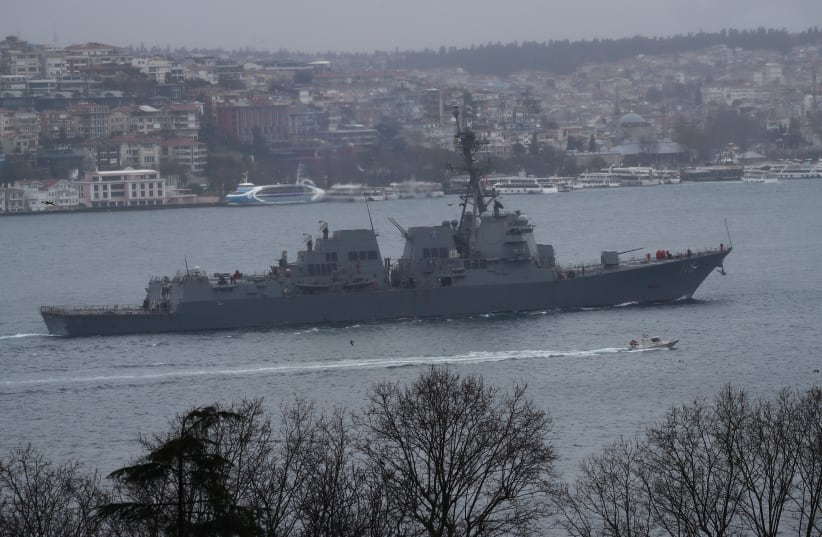
The USS Thomas Hudner shot down multiple attack drones launched by the Iran-backed Houthi militia over the Red Sea early Thursday morning, US Central Command said on X. The drones were reportedly fired towards Israel.
On the morning (Yemen time) of November 23, the USS Thomas Hudner (DDG 116) shot down multiple one-way attack drones launched from Houthi controlled areas in Yemen. The drones were shot down while the U.S. warship was on patrol in the Red Sea. The ship and crew sustained no… pic.twitter.com/TqXuaKsgwe
— U.S. Central Command (@CENTCOM) November 23, 2023
No damage or injuries were caused.
The incident came just hours after a cruise missile fired by the Houthis was intercepted by the Israeli Air Force near Eilat.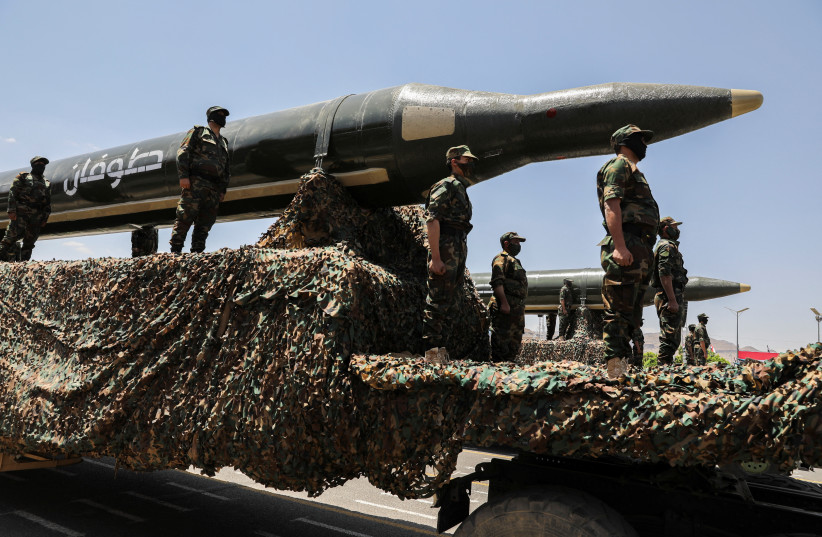
This is the second time in a matter of days that the USS Thomas Hudner has shot down Houthi drones. Last week, the warship shot down a drone in the Red Sea that emanated from Yemen and was fired towards Israel.
Yemen's Houthi leader said last Tuesday his forces would continue its attacks on Israel, and that they could target Israeli ships in the Red Sea and the Bab al-Mandeb Strait.
This came after the Houthis shot down a US military MQ-9 drone while it was in international airspace.
The Houthis, who have been at war against a Saudi-led coalition since 2015, have emerged as a major military force in the Arabian Peninsula, with tens of thousands of fighters and a huge arsenal of ballistic missiles and armed drones.
Reuters contributed to this report.
Netanyahu: I instructed the Mossad to act against Hamas
Netanyahu said that Israel's Mossad will act against Hamas leaders "where they are” – signaling a potential willingness to target them outside of Gaza.
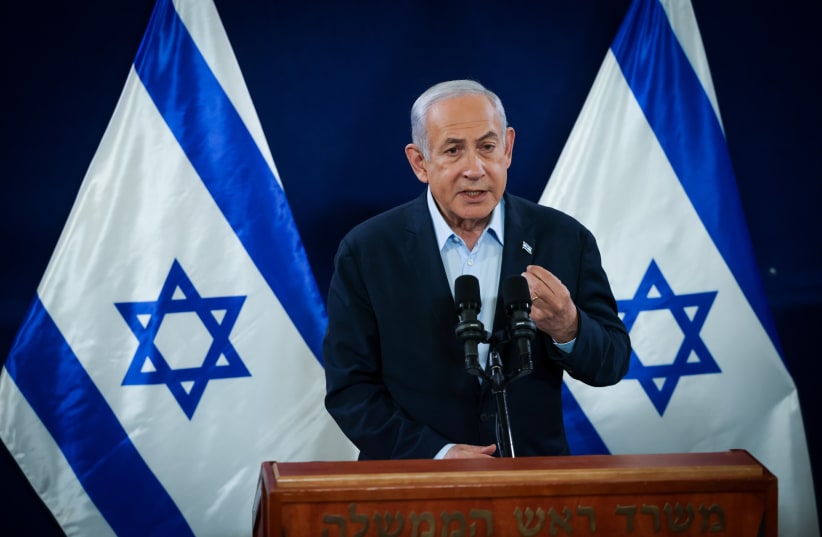
The Mossad has been instructed to act against Hamas leaders wherever they are, Prime Minister Benjamin Netanyahu told reporters on Wednesday night as he defended a partial hostage deal that includes a four to nine-day pause in the Gaza war.
“It was a hard decision, but the right decision,” Netanyahu said.
He spoke one day after the government approved an agreement by which up to 98 hostages would be freed in exchange for the first-ever pause in the war and the release of jailed Palestinian women and minors.
Netanyahu struck a harsh note as he assured reporters that Israel’s security services had Hamas in its scope.
“I instructed the Mossad to act against Hamas leaders where they are,” Netanyahu said as he hinted that Israel could target them outside of Gaza, including in Qatar.
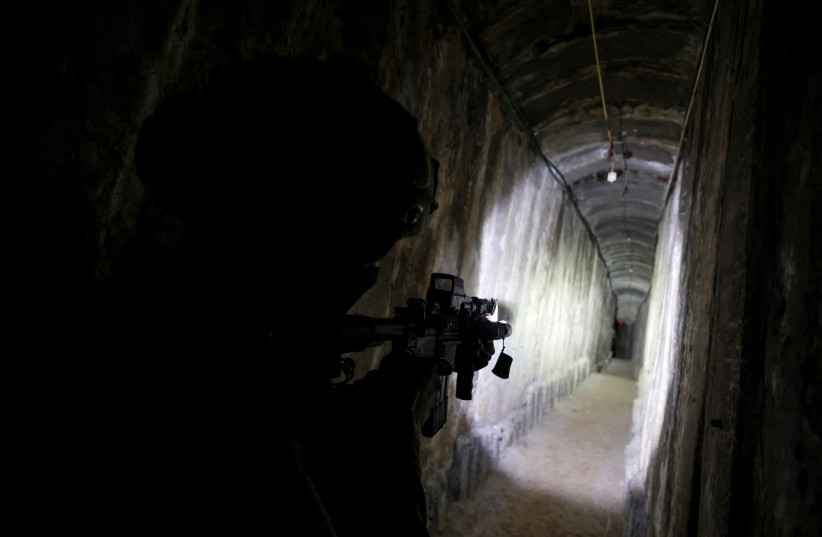
On Tuesday, Hamas told Lebanese media that the deputy commander of the Lebanese branch of Hamas's al-Qassam Brigades, Khalil al-Kharaz, was killed in an Israeli airstrike in southern Lebanon.
According to Lebanese reports, Kharaz was killed in an airstrike that targeted a vehicle he was traveling in on the road between Chaaitiyeh and Qlaileh, south of Tyre.
Netanyahu ducked a direct question about whether Israel would attempt to assassinate Hamas leaders during the pause or freeze its efforts until the pause was over.
He hit a harsh note as he assured the Israeli public that the pause would be temporary and that Israel’s military campaign to oust Hamas from Gaza would resume when it was over.
“The war is continuing… until we achieve all of our goals: Return all of the hostages, eliminate Hamas and ensure that on the day after Hamas, no element that supports terrorism, educates its children for terrorism, and pays terrorists or their families, will control Gaza.
“Gaza will no longer constitute a threat to Israel. We will restore security in both the south and the north. We are winning and will continue to fight until absolute victory,” he stated.
Gaza hostages deal
He spoke as Mossad chief David Barnea was reportedly in Qatar, a country that – along with Egypt – had mediated the agreement by which 50 to 98 out of the over 239 hostages held in Gaza since October 7 would be freed.
Netanyahu also promised that all the hostages would be released, including the two Israeli captives Hamas has held since 2014 and 2015 — Avera Mengistu and Hisham al-Sayed. He also referenced the two soldiers believed killed in the 2014 Gaza war Hadar Goldin and Oron Shaul.
“We will return everyone home. And when I say everyone I mean everyone,” he said.
Hamas had seized the hostages when it infiltrated southern Israel, killing over 1,200 people. Israel has since conducted a military campaign to oust Hamas from Gaza.
Netanyahu thanked US President Joe Biden for his efforts to secure and expand the deal, which was mediated by Qatar with Egypt’s help, even as he took credit for Biden’s increased involvement.
“We conducted difficult negotiations; we fought to improve the outline. I have just spoken again with President Biden and thanked him for acting, as per my request, with the intermediaries to significantly improve the outline; such an improvement has been achieved,” Netanyahu said.
Go to the full article >>Blinken, Saudi foreign minister reaffirmed preventing spread of Gaza conflict

US Secretary of State Antony Blinken and Saudi Foreign Minister Prince Faisal bin Farhan Al Saud reaffirmed their commitment to preventing further spread of the Israel-Palestinian conflict when they spoke on Wednesday, the State Department said.
Blinken also welcomed Saudi Arabia’s efforts to secure a durable peace agreement in Yemen, the State Department said.
Go to the full article >>Israeli strike kills five Hezbollah fighters, including senior member's son -Hezbollah
The Israeli military did not immediately provide comment on reports that multiple people had been killed or specify the location of the strike.
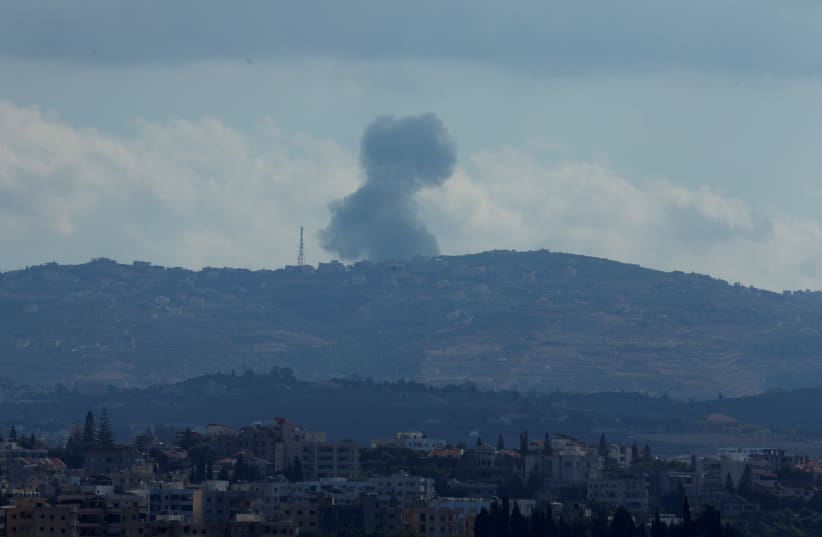
An Israeli strike on the village of Beit Yahoun in south Lebanon on Wednesday evening killed five Hezbollah fighters, including the son of a senior Hezbollah member, according to Hezbollah and three sources with knowledge of the situation.
The group announced late Wednesday night the death of five of its members, bringing the total toll of Hezbollah fighters killed since violence broke out along the border to 85.
Among those named was Abbas Raad, who sources said was the son of senior Hezbollah figure and member of Lebanese parliament Mohammad Raad, who was sanctioned by the United States in 2019.
Two Hezbollah sources and one security source told Reuters that the five were killed in an Israeli strike on the village of Beit Yahoun.
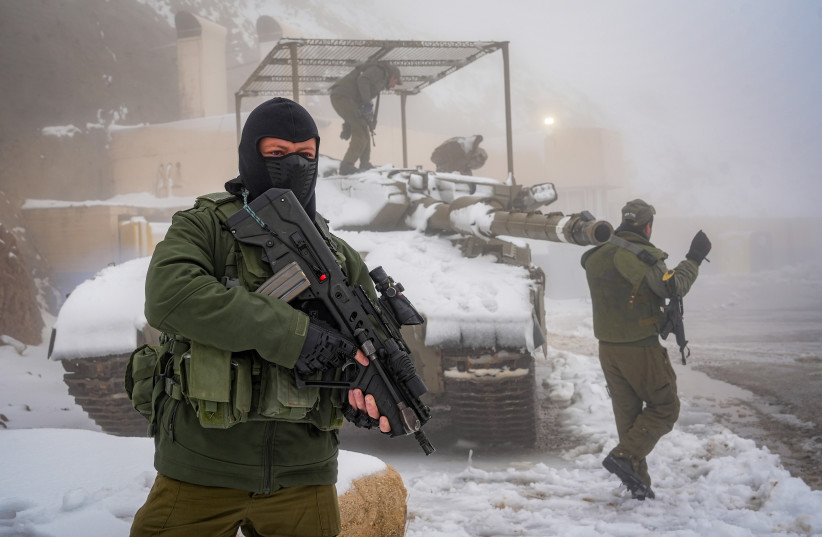
Israel and Hezbollah - an ally of the terrorist group Hamas - have traded escalating rocket fire along the Lebanese border following Hamas's Oct. 7 attack on Israel.
In a statement, the Israeli military said its fighter jets struck Hezbollah infrastructure in Lebanon, and that its troops and aircraft hit two cells that fired at Israeli troops or attempted to launch rockets into Israel.
The Israeli military did not immediately provide comment on reports that multiple people had been killed or specify the location of the strike.
Go to the full article >>Son of Hamas Co-Founder speaks out against Hamas violence, indoctrination at UN
Youssef, the son of Hamas co-founder Sheikh Hassan Yousef, has opposed the terror group since defecting in the 1990s.

Mosab Hassan Yousef, the son of Hamas co-founder Sheikh Hassan Yousef, spoke out about the horrors perpetrated by Hamas at the UN on Monday.
Youssef spoke on Hamas terror attacks, such as suicide bombings carried out against Israeli civilians, and their indoctrination of the population in Gaza – especially children.
“Today I can speak on the authority of a Palestinian child, (as) someone who grew up in that culture," Youssef said.
“We’re talking about a religious group that does not believe in political borders and wants to annihilate an entire care in order to build an Islamic state. I don't know what else can be said about this and I don't know why it is not obvious to everybody.”
Youssef, who wrote a book titled “Son of Hamas” in 2010, has rallied against the terror group since defecting in the 1990s. Youssef worked with Israeli counter-intelligence and helped the Mossad in various operations – including incarcerating his own father, Hamas co-founder Sheikh Hassan Yousef.
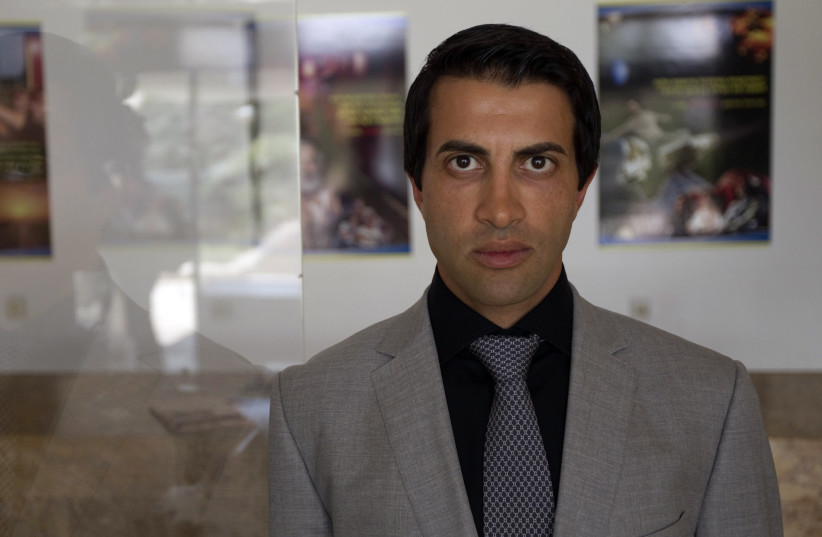
"Hamas' first crime against children in the Palestinian societies is not arming them or encouraging them to carry suicide bombing attacks – it's the religious ideological indoctrination that I had to go through with one intention in mind to annihilate the state of Israel. This is Hamas' primary goal," Yousef said.
"(As) a 10-year-old child when I disobeyed Hamas, I was tied up to a post and I was whipped by Hamas top leader. My father was in prison at that time and this leader thought that he was my mentor. This is Hamas discipline. This is how they wanted me to be... to become a violent savage like them," Youssef continued.
"Son of Hamas"
Youssef has long spoken publicly about his experiences growing up in the West Bank city of Ramallah as the son of Hassan Yousef, a co-founder of Hamas; being imprisoned, and becoming an informant and later advocate for Israel.
He’s also spoken on behalf of media groups, such as his address at the 2019 Jerusalem Post Annual Conference, and for NGOs such as his 2017 speech at a UN Human Rights Council debate for UN Watch.
Youssef was also the subject of the 2014 documentary “The Green Prince.”
"I am not a part of propaganda. I don't work for anybody. I only represent myself and on this authority I speak, so don't be mistaken and take my words very carefully,” Youssef said in his remarks. “Hamas is committing a crime against this generation and the next generations to come, so blaming Israel is not going to solve the problem," Yousef declared.
Sam Halpern contributed to this report.
Go to the full article >>'Post' joins Israeli forces in Hamas's Gaza tunnel underworld
This was the first time a reporter from the Jerusalem Post crossed into Gaza since the IDF withdrawal in 2005.
The IDF on Wednesday brought The Jerusalem Post and selected other media outlets to view Hamas’s terror infrastructure at Al Shifa Hospital, especially its several-hundred-meter tunnel network, up close.
This was the first time that a reporter from the Post had crossed into Gaza since the IDF withdrawal in 2005, and it brought up close everything the IDF had found since November 15 that Hamas had tried desperately to hide at Shifa Hospital.
Laid out next to the Qatar facility within the Shifa complex was a vast amount not only of Hamas guns and grenades which the IDF found hidden throughout the hospital, but also rocket-propelled grenade launchers, large and small advanced drones for delivering explosives, and a variety of sophisticated intelligence platforms.
A first look into Hamas’ underground city, underneath the Shifa Hospital complex: pic.twitter.com/O8gEQHAfJ6
— Israel Defense Forces (@IDF) November 22, 2023
JPost enters the depths of Hamas's terror tunnels
The vastness of the tunnel itself, with the Post viewing a variety of sophisticated rooms and the blast door which the IDF displayed earlier this week, was testimony to how important this location was to Hamas.
Among the rooms was a spacious bedroom with two large beds and a large modern air conditioning unit, a kitchenette, a bathroom, and other facilities, as well as extensive plumbing and electrical wiring to enable all of the infrastructure.
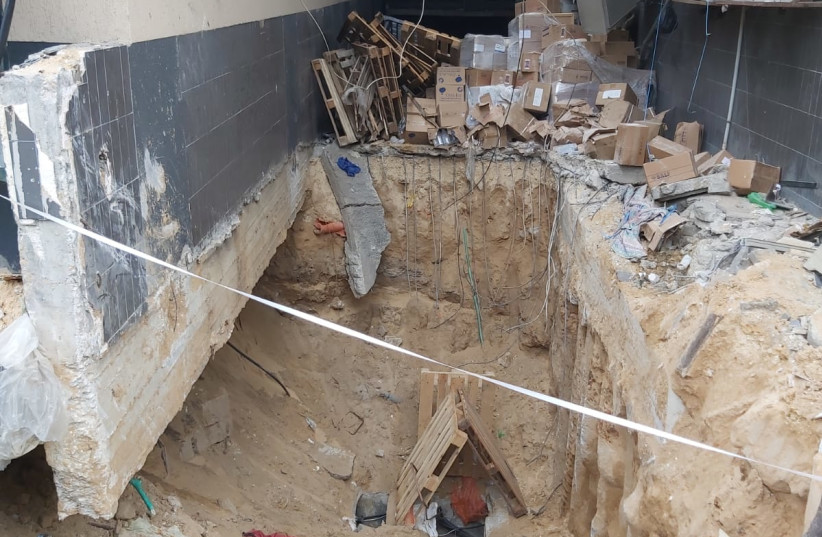
Two members of the IDF’s special Yahalom unit for uncovering tunnels and IDF Chief Spokesman Brig.-Gen. Daniel Hagari described the process of discovering the tunnel as a “huge riddle.”
They had intelligence about Hamas’s tunnel network at Shifa Hospital long before arriving at the site. However, not only is the hospital site immense, with an extensive number of spread-out buildings and courtyards, but also, they said, they had found signs that Hamas went out of its way to cover up and fill in the already well-concealed tunnels once they suspected that the IDF might take control of Shifa.
This meant that the Yahalom unit had to survey and inspect a large amount of land and courtyards around and between the Shifa Hospital buildings.
An initial breakthrough came on November 17 when the IDF destroyed a small structure that looked suspicious and was able to find one of the shafts and entrances to the greater tunnel network under the rubble of that structure.
The IDF showed the Post where the structure had previously stood and the initial shaft of the tunnel which they found, including the unusual spiral staircase which the IDF had presented at a press conference.
However, only several days later were they able to locate the more important part of the tunnel network, including all of the specialized rooms, likely used by Hamas battalion commanders.
Part of the delay was due to the priority of searching room-to-room for Hamas terrorists, weapons, intelligence, and anything linked to hostages or murdered Israelis.
Another delay came when the IDF announced on November 19 that it had arrived at a blast door whose breach required great care if troops were not to lose the opportunity to follow the tunnel beyond the door.
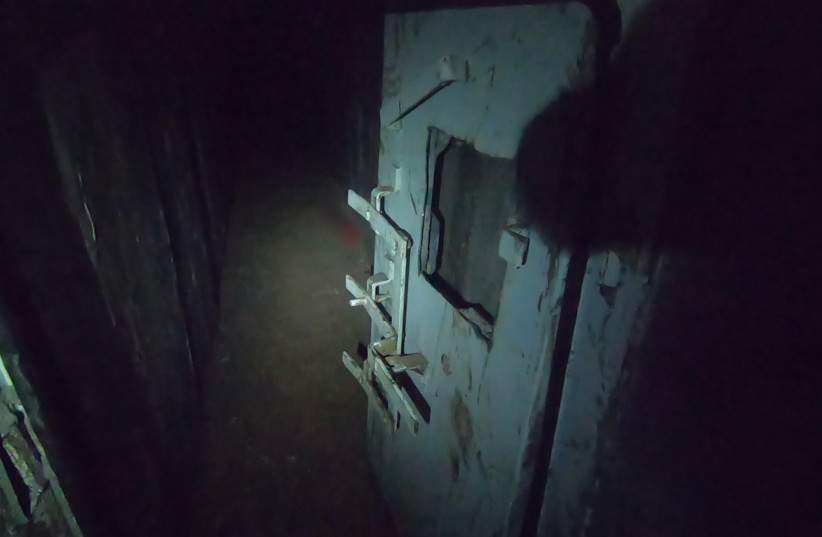
The Post was able to see the broken door and the hundreds of additional meters of the Hamas tunnel network beyond that point.
A taste of Hamas's Shifa secrets
The extensive weapons that IDF Col. Elad Tzuri presented were, he said, just a taste of what Hamas had hidden throughout the Shifa Hospital complex, considering that all the displayed weapons were only found in the last 48 hours.
This meant that all of the weapons, military equipment, and intelligence material that the IDF seized and publicized to the world in the early days of the Shifa-Hamas discoveries, including those hidden behind an MRI machine, were located in another area.
Tzuri said, “These items were found both in indoor and outdoor common areas – courtyards of the hospital as well as in patients’ rooms, and some in the vehicles of Hamas’s Nukbeh [elite] unit,” which were found on the hospital’s grounds.
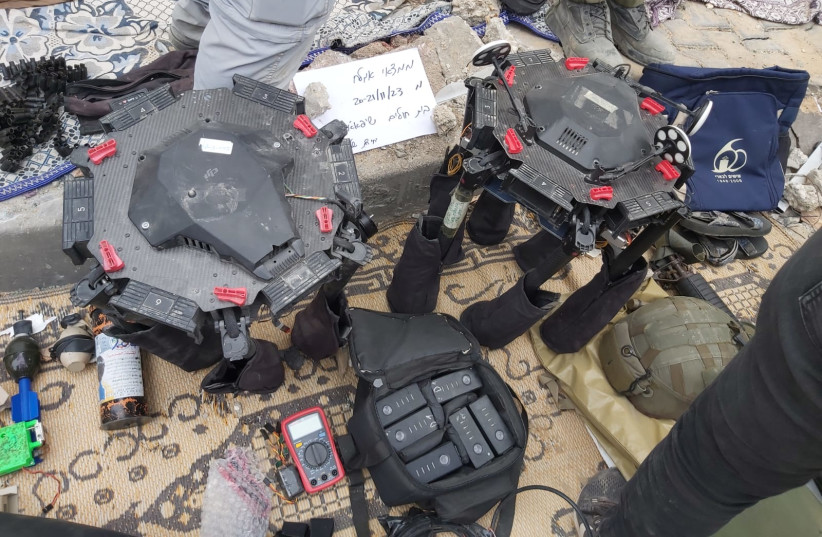
Further, Tzuri noted that the IDF had found RPGs, improvised explosive devices, grenades, guns, drones, and materials used by Hamas naval commandos.
The IDF colonel said that Hamas had been completely rooted out of the Shifa area which was once one of its top locations, but that there were still pockets of Hamas resistance in other parts of northern Gaza.
Tzuri admitted that until he was given the order to go into Shifa, he had never imagined he would set foot on such a key Hamas command center, but added that he felt it was an honor to have been given the mission “to allow future generations of our children to live securely.”
In addition, Tzuri emphasized how the initial Hamas tunnel shaft discovered was near the outside of the Shifa complex, whereas the other end of the tunnel with the extensive rooms, was right next to the Qatari facility deep within the complex.
Hagari pointed out to the Post a spot some 50 meters away where the body of hostage Noa Marciano was found concealed after Hamas killed her.
IDF Maj. “D.” of the special forces Maglan Unit described to the Post special orders and training that he and his unit were given for handling medical staff and patients as they took control of the complex.
Senior IDF officials have emphasized that they were deeply involved in ensuring that Maglan soldiers had extra restrictive rules of engagement when entering the complex, which Hagari said on Tuesday had contributed to not a single civilian being killed during the IDF’s operation to take control.
D. said, “On Tuesday we were given responsibility for taking control of Shifa, along with IDF Brigade 7 and other units... the first mission was to take control. He also said that they worked with the Yahalom Unit to uncover tunnels.
The second mission had a technological focus, to bring as much information as possible to our defense establishment” for additional efforts against Hamas and for locating hostages.”
“The third mission was a humanitarian one,” D. said, detailing the provision of medical care, food, and water to patients who have not been able to evacuate, adding that his forces regularly interact with Palestinian civilians in the hospital, appointing a liaison for each facility to ensure orderly responses to the civilians’ needs.
Further, D said, “We enable the IDF to make progress without harming any civilians,” as well as providing specific intelligence to defense officials “to bring the hostages home.”
Asked about fighting related to Shifa, D said that they had not encountered resistance within the hospital, but he revealed that the IDF utilized a mixture of his forces and tanks on site to kill the five Hamas terrorists who tried to prevent the initial IDF intervention as Israeli forces were first entering.

The Post entered Shifa after crossing five or six checkpoints coming in from Kibbutz Be’eri near the border.
Initially, the journey was in jeeps across the no-man’s land fences between Israel and Gaza, which Hamas had bulldozed to carry out its October 7 massacre.
Next, there was a stage of crossing through the northern Gaza outskirts, with some “built-up” areas, though, since the war, all of these areas were destroyed, with mere shells of houses and buildings left in what has become a wasteland.
No Palestinians were to be seen anywhere in any of these areas, though the Post witnessed around 1,000 IDF troops split mostly into units of 10-50 in a variety of locations, along with tanks, D9s, and many other vehicles.
Eventually, the Post came to the famed Gaza beach area, which clearly once boasted fancy hotels, children’s attractions, and the full range of beach life.
All of that was shattered and steamrolled by the war.
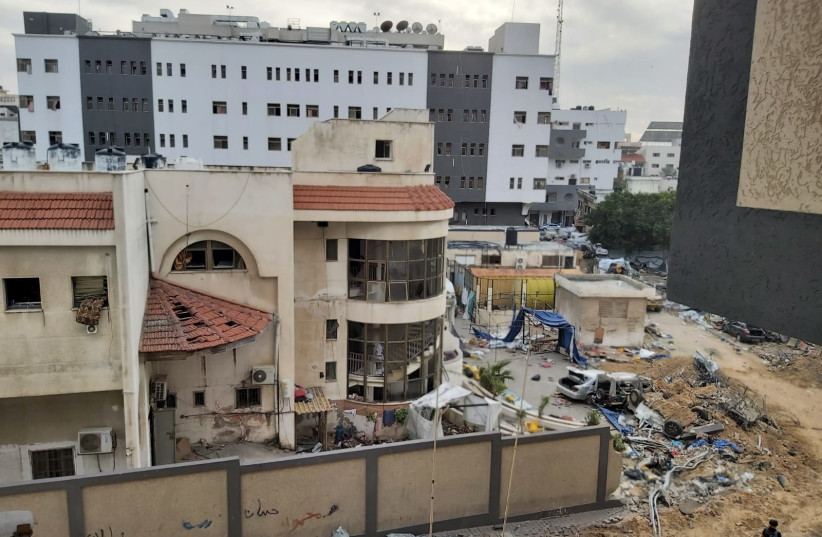
After some minutes driving along the Gaza beach, the Post entered the highly armored “Nimarim” which sources say have been able to take hits by five to eight Hamas anti-tank missiles and continue on their missions.
The armored vehicles have no regular windows for the approximately eight passengers, except one which can be opened on top and which the IDF forces opened once, they said, in order to better navigate a narrow area without crashing.
Mostly, the driver navigates with help from an additional soldier who has a highly sophisticated camera that shows the street ahead and behind.
The noise from the Nimarim was intense, but it felt more secure when entering the heart of Gaza City where Shifa is located.
On the way out of Gaza, the bleakness of what was left of Gaza City stood out starkly since some of the initial fear of what would greet us at Shifa had subsided and it was easier to look directly at the multi-year challenge of what rebuilding Gaza will look like... whenever the war is over and the future fate of Gaza is decided.
Go to the full article >>Israel-Hamas war: IDF, Shin Bet kill six West Bank terrorists, arrest 29
In the Dheisheh refugee camp, many weapons and incendiary materials belonging to Hamas were confiscated in a joint IDF and Shin Bet operation.
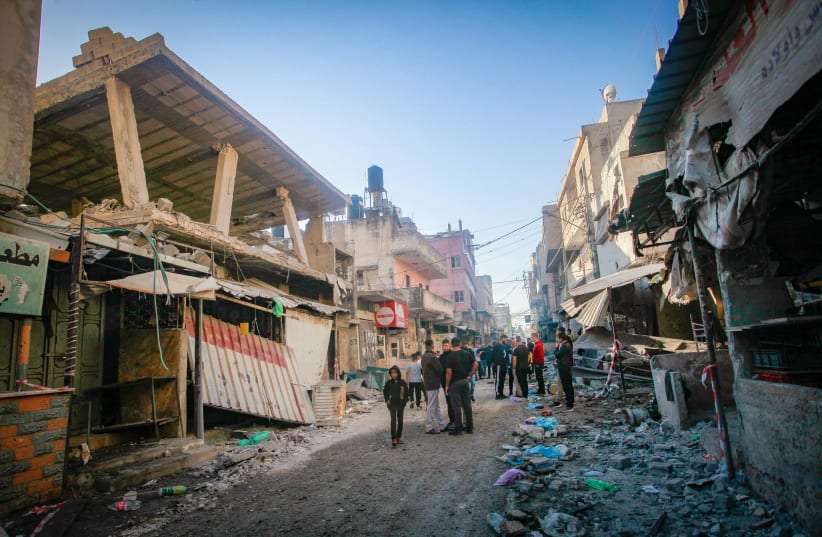
The IDF and Shin Bet killed six gunmen and arrested 29 more throughout the West Bank on Wednesday. Three of those arrested are affiliated with Hamas.
The six, among them four senior officers, were eliminated in an air strike directed by Shin Bet (Israel Security Agency). They had attacked civilians and IDF soldiers with explosives and gunfire.
One gunman wounded in the airstrike was captured and detained for further medical treatment and investigation.
Violence spreads to Dheisheh refugee camp
In the Dheisheh refugee camp, south of Bethlehem, many weapons and incendiary materials belonging to Hamas were confiscated in a joint IDF and Shin Bet operation. Nine arrests were made, and dozens of suspects interrogated.

During the operation, explosive charges and stones were thrown at Israeli forces, who responded with live fire. No casualties were reported.
Go to the full article >>The secret negotiations that led to the Gaza hostages deal
Begun days after Hamas's October 7 attack, the painstaking negotiations finally culminated in a deal to release 50 hostages in exchange for 150 Palestinian prisoners and a four-day pause in fighting.

Shortly after Hamas militants took hostages during their deadly assault on southern Israel on October 7, the government of Qatar contacted the White House with a request: Form a small team of advisers to help work to get the captives freed.
That work, begun in the days after the hostages were taken, finally bore fruit with the announcement of a prisoner swap deal mediated by Qatar and Egypt and agreed by Israel, Hamas and the United States.
The secretive effort included tense personal diplomatic engagement by US President Joe Biden, who held a number of urgent conversations with the emir of Qatar and Israeli Prime Minister Benjamin Netanyahu in the weeks leading up to the deal.
It also involved hours of painstaking negotiations including Secretary of State Antony Blinken, CIA Director Bill Burns, national security adviser Jake Sullivan and his deputy Jon Finer, and US Middle East envoy Brett McGurk, among others.
Two officials involved in the effort provided extensive details of the work that led to an agreement in which 50 hostages are to be freed in exchange for 150 Palestinian prisoners during a four-day pause in fighting.
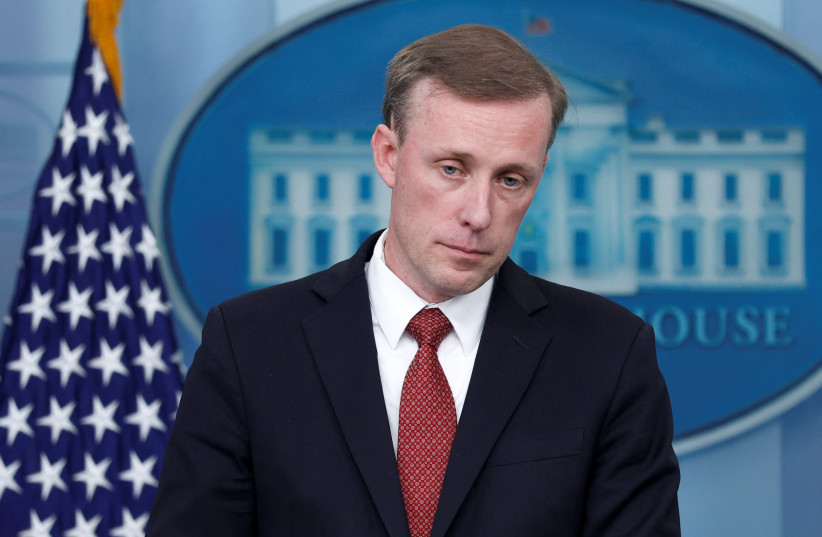
Qatar's helped broker initial release
Shortly after October 7, Qatar - a long-established mediator in a volatile region - approached the White House with sensitive information regarding the hostages and the potential for their release, the officials said. The Qataris asked that a small team, which they called a "cell," be established to work the issue privately with the Israelis.
Sullivan directed McGurk and another National Security Council official, Josh Geltzer, to establish the team. This was done without telling other relevant US agencies because Qatar and Israel demanded extreme secrecy with only a few people to be in the know, the officials said.
McGurk, a seasoned diplomat with deep experience in the Middle East, held daily morning calls with the prime minister of Qatar, Mohammed bin Abdulrahman bin Jassim Al Thani. He reported back to Sullivan and Biden was briefed daily on the process.
Biden got an upfront look at what the victims of the Hamas attack endured when he held an emotional, lengthy meeting on October 13 with the families of Americans who were either being held hostage or were unaccounted for.
Days later, Biden traveled to Tel Aviv for October 18 talks with Netanyahu. The official said securing the release of hostages was a central focus of his discussions with Netanyahu and his war cabinet, as well as humanitarian assistance.
Five days later, on October 23, the White House team's work helped yield the release of two American hostages, Natalie and Judith Raanan.
From outside Sullivan’s West Wing office McGurk, Sullivan and Finer tracked in real time the captives' difficult, multi-hour journey out of Gaza.
The return of the two Americans proved it was possible to gain freedom for hostages and gave confidence to Biden that Qatar could deliver through the small team that had been established, the officials said.
Now, an intensified process started to get more hostages out. When this happened, Burns began speaking regularly with Mossad director David Barnea.
Biden saw an opportunity to gain the release of a large number of hostages and that a deal for prisoners was the only realistic path to securing a pause in the fighting, the officials said.
Deal nearly reached prior to ground invasion
On October 24, with Israel poised to launch a ground offensive in Gaza, the US side got word that Hamas had agreed to the parameters of a deal to release women and children, which would mean a pause and a delay in the ground invasion.
US officials debated with the Israelis whether or not the ground offensive should be delayed.
The Israelis argued that terms were not firm enough to delay, since there was no proof of life for the hostages. Hamas claimed they could not determine who was being held until a pause in fighting began.
Americans and Israelis viewed the Hamas position as disingenuous. The official said Israel's invasion plan was adapted to support a pause if a deal came together.
Biden then engaged over the next three weeks in detailed talks as proposals about a potential hostage release were traded back and forth. Demands were made that Hamas produce the lists of hostages it was holding, their identifying information, and guarantees of release.
The process was long and cumbersome - communication was difficult and messages had to be passed from Doha or Cairo into Gaza and back, the officials said.
Biden held a previously undisclosed phone call with the Qatari prime minister when the phasing of releases began to take shape, the official said.
Under the agreement that was taking shape, women and children hostages would be freed in a first phase, together with a commensurate release of Palestinian prisoners from the Israelis.
The Israelis insisted Hamas ensure all women and children come out in this phase. The US side agreed, and demanded through Qatar proof of life or identifying information for women and children held by Hamas.
Hamas said it could guarantee 50 in the first phase, but refused to produce a list of identifying criteria. On November 9, Burns met in Doha with the Qatari leader and the Mossad's Barnea to go through the texts of the emerging arrangement.
The key obstacle at that point was that Hamas had not clearly identified who it was holding.
Three days later, Biden called the emir of Qatar, Sheikh Tamim bin Hamad Al Thani, and demanded to know the names or clear identifying information for the 50 hostages including ages, gender and nationalities. Without the information, the official said, there was no basis to move forward.
Shortly after Biden's call, Hamas produced details for the 50 hostages it said would be released in the first phase of any deal.
Biden in a November 14 call urged Netanyahu to take the deal - Netanyahu agreed.
McGurk saw Netanyahu that same day in Israel. Walking out of a meeting, Netanyahu grabbed McGurk’s arm and said “we need this deal” and urged Biden call the emir of Qatar on the final terms, one of the officials said.
"Time was up"
Talks stalled as communications went dark in Gaza.
When they resumed, Biden was in San Francisco attending an Asia-Pacific summit. He called the emir of Qatar and told him this was the last chance, and the emir pledged to apply pressure to close the deal, the officials said.
"The president insisted the deal had to close, now. Time was up," one official said.
On November 18, McGurk met in Doha with the Qatari prime minister. Burns was dialed in after he spoke with Mossad. The meeting identified the last remaining gaps toward a deal.
The agreement was now structured for women and children to be freed in the first phase, but with an expectation for future releases and the aim to bring all hostages home to their families.
In Cairo the next morning, McGurk met with Egypt intelligence chief Abbas Kamil. Word came from Hamas leaders in Gaza that they had accepted nearly all the agreements worked out the day before in Doha.
Only one issue remained, tied to the number of hostages to be released in the first phase and the ultimate structure of the deal to incentivize releases beyond the 50 known women and children, the officials said.
A flurry of additional contacts ensued, and the deal finally came together.
Go to the full article >>Israel-Hamas War: What you need to know?
- Hamas launched a massive attack on October 7, with thousands of terrorists infiltrating from the Gaza border and taking some 240 hostages into Gaza
- Over 1,200 Israelis and foreign nationals were murdered, including over 350 in the Re'im music festival and hundreds of Israeli civilians across Gaza border communities